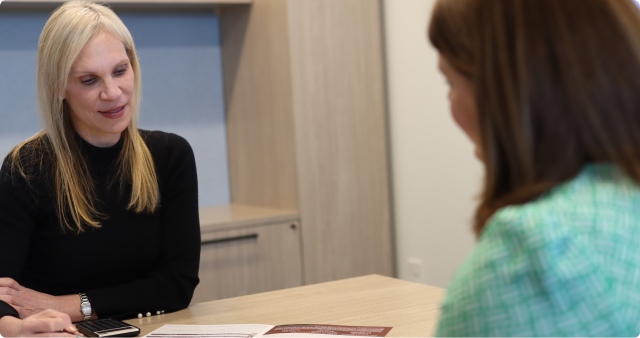🎯 Rethink your financial future with the Money Matters Podcast, hosted by Wes Moss and Connor Miller. This episode shares real-world strategies to help you stay focused, informed, and better prepared for retirement—without the jargon.
What you’ll discover in this episode:
• Stay alert to shifting market sentiment tied to central bank leadership and evolving economic policies.
• Watch inflation trends that remain relatively controlled despite modest recent increases.
• Track earnings season highlights from banks, airlines, and semiconductors as corporate profits hold steady.
• Monitor projections of $1 trillion in stock buybacks and $640 billion in dividends, reflecting corporate capital allocation trends.
• Learn how buybacks may influence shareholder yield and earnings per share over time.
• Consider a multi-asset class income investing approach designed to generate income from various asset classes.
• Celebrate a new chapter as producer Mallory welcomes her baby to the Money Matters family.
• Examine near-record-low unemployment and steady wage growth supporting consumer strength.
• Explore accelerating AI adoption and its potential impact on worker productivity.
• Follow continued consumer momentum with rising retail and dining sales.
• Evaluate how recent tax legislation and tariff frameworks might shape long-term fiscal stability.
• Recognize that market volatility could accompany positive returns.
• Note a healthier market with nearly half of stocks outperforming benchmarks.
• Reinforce the value of diversification as bonds resume their role in offsetting equity swings.
• Explore building a total return strategy blending income and growth for added balance.
🎧 Listen now and subscribe to the Money Matters Podcast for practical insights to help support your long-term financial confidence.
Read The Full Transcript From This Episode
(click below to expand and read the full interview)
- Wes Moss [00:00:02]:
The Q ratio, average convergence, divergence, basis points and BS Financial shows love to sound smart, but on Money Matters we want to make you smart. That’s why the goal is to keep you informed and empowered. Our focus providing clear, actionable information without the financial jargon to help 1 million families retire sooner and happier.Wes Moss [00:00:27]:
Based on the long running WSB radio show, this Money Matters podcast is tailor made for both modern retirees and those still in the planning stages. Join us in this exciting new chapter and let’s journey toward a financially secure and joyful retirement together. Connor Miller welcome to the studio my friend.Connor Miller [00:00:50]:
Always great to be on with us.Wes Moss [00:00:53]:
So tons of news this week. We maybe won’t spend as much time talking about Traeger versus Green egg grills like we did last week and I think you missed that. It was Jeff Lloyd and I here last weekend. But still a tremendous amount of news flowing in throughout the week. Trump, Powell, this back and forth soap opera. Powell’s gonna be fired. Then Trump essentially said he wasn’t gonna fire him. But that’s a replay of what we saw only a couple of months ago.Wes Moss [00:01:18]:
Markets kind of relieved with that. We saw inflation tick just a touch higher. 3. 10 of a percent for the past month which was June year over year, 2.7% which is still pretty tame. Connor Miller maybe the Fed wants it to be 2% and yes the prior month was 2.4 but the numbers are still I would say very much in check when it comes to inflation. Big earnings. I know that we just started earnings season but JJ had a really interesting earnings call and number the semiconductors had. Taiwan semi had reported, the banks reported.Wes Moss [00:01:56]:
We saw some airlines earnings. Here’s a headline that was out of Citadel securities says that corporate buybacks are going to reach a trillion dollars, $1 trillion in corporate stock buybacks in 2025 and retail sales. I like this. This is interesting. If you look at what retail says, this is Commerce Department, U.S. retail, Food Service and retail up a little over a half percent. I love these. The numbers are so staggering.Wes Moss [00:02:28]:
$720 billion up. That was a rebound after May’s. A little bit of a decline in May. So compared to June of last year, overall sales up about almost 4% 3.9%. So you look at the US consumer continues to be strong and that’s 70% of the economy. So the consumer stuff, you and I, we all stop spending. That’s when we all start to feel it in other ways. That just doesn’t seem to be happening.Wes Moss [00:02:56]:
If you look at non store Retailers think online that goes up even more four and a half percent year over year. And even restaurants and bars had a strong showing up a little over six and a half percent year over year. So really strong numbers. I know there’s been so much concern about tariffs, what that’s going to do to prices. Do higher prices slow people down? Well, so far the consumer’s holding up, retail sales are holding up in almost every measure and inflation is still somewhat in check, not quite where the Fed wants it to be. So any of that pique your interest? Connor Miller? Anything important there?Connor Miller [00:03:33]:
I was just going to add to that. I mean, we did a kind of a mini economic overview for our team this past week. And on the topic of retail sales and inflation, you look at the employment picture, looks pretty good. Unemployment rate still sitting at 4.1%. Wage growth looks good. Inflation like you said. Yeah, maybe we want it to come down a little bit, but I think all things considered with the tariff conversation, inflation’s been pretty good. We haven’t seen a lot of the tariff effect yet and hopefully that continues to be the case.Connor Miller [00:04:09]:
And then you look at corporate profits also holding up really well. And so a lot of the kind of the leading indicators that we look at for the economy are still showing signs of being pretty positive.Wes Moss [00:04:20]:
I love how you just said unemployment’s pretty low. It’s, you know, employment levels are pretty good. 4.1%, 4.1% unemployment rate in the United States, that’s close to an all time low. I mean, let’s get some enthusiasm around that. Connor Miller It’s a very good number, I think.Connor Miller [00:04:40]:
Staggering, you’re right. Thanks for calling me out on that. Look, I think what I’m referring to is the level of jobs that we’re adding. I’d say is pretty good, about 150,000 jobs added the last couple months.Wes Moss [00:04:52]:
At the same time, we have these worries and these fears around artificial intelligence and that taking service jobs, really professional service jobs, really not in just one industry. But there’s been calls for AI taking jobs, creating less jobs. And AI has now been around and this is why I want to go to the outlook that our team. Did you talk a little bit about AI? It’s been around now. It’s not brand new. AI didn’t just show up last week. It’s been heavily used over the last couple of years now and we haven’t seen jobs being taken away. We’re still adding jobs and I’m not saying it’s not going to have an impact, but it’s just the cross current of sure some jobs are going away, but what are the other jobs that are coming into the marketplace because of this new technology? Right now, at least right now they seem to be netting themselves out.Wes Moss [00:05:47]:
The good, the bad, still a really low unemployment rate. The other thing I want to get your take on is this. We love to talk about dividends here on the show and we’ve talked for years and years and years about income investing. I’m going to, I want to us to bring back a term, Connor, that we used to use forever and then we tried to simplify the term and then I realized over the last month or so we’re giving the original term kind of some short shrift by not saying it. And income investing, it’s a philosophy of an investing style that we really believe in, but it almost glosses over the power of what we used to say, which was multi asset class income investing. And I think we tried to simplify it to say, oh, it’s just income investing. But it also loses the point. We want to see income from many different areas of the marketplace that are, that are not necessarily fully related or correlated.Wes Moss [00:06:44]:
And really to give it a fair description, it’s multi asset class income investing. And dividends are a big part of that. So the reason I bring that up, we continue to see dividends rise. Last year The S&P 500 paid out approximately $600 billion in dividends. It’s a big part of the income investing story, dividends from stocks. But the again this year 2025 is estimated to be around $640 billion in dividends paid out cash into your account if you own these shares. This is just the S&P 500 collectively. But then we get to this other topic that is kind of fits somewhere in the middle, Connor, which is corporate buybacks could be $1 trillion in 2025.Wes Moss [00:07:33]:
Now for some quick context before we describe a corporate buyback, because it’s not the same as a dividend. It’s pretty similar though to a dividend in 2023. So we’re just going back two years. That number is at 795 billion. So still still tremendous amount of corporate buybacks. We’re going to be up more than $200 billion this year of companies buying back their own stock. So maybe just help our listeners understand what just in general the buyback is, why companies seem to like to do it and what it really means for investors.Connor Miller [00:08:06]:
Well, I think what you’re hitting at is kind of this, this overall view of Shareholder return or shareholder yield of a company has a couple options on what they can do with the excess cash on hand. And a lot of times what we’re talking about, because we do talk about income investing, the multi asset class income investing approach, we’re talking about dividends. But you’re right, what we miss out on is actually a larger share of cash or capital returned to shareholders in the form of share buybacks or corporate buybacks. And so what we see today is actually about 60% of the shareholder return, which is just taking dividends and share buybacks together. 60% of that is going towards their share buybacks.Wes Moss [00:08:54]:
Okay, so just a simple example. A company is literally taking the cash from their earnings and they’re. Or they can borrow for this, but typically they don’t do that. It’s taking their net income and they’re just saying, hey, I want to buy our own stock.Connor Miller [00:09:08]:
Yeah. And they can do a couple things. They can buy back stock, they can pay a dividend, they can pay down debt, they can buy another business. They can, you know, invest in different products, property and equipment. So there’s all sorts of things they can do. But yeah, buying back their stock, by and large is really a sign of confidence. Either they think their stock is undervalued or just kind of a show of confidence or a show of excess capital that they have to then give back to shareholders.Wes Moss [00:09:37]:
The other really important part about that mechanism is just the math behind companies increasing their earnings. Not just earnings overall or gross, but per share. So this is the other reason the companies like to do this, is that as they buy back their own stock and reduce share count, it helps them increase their earnings per share. So that’s the other sign of a healthy company. Now look, we can make an argument that it’s, it would be more healthy if they took that trillion dollars and they built new factories and they built new plants and then they were here in the United States, so they’re avoiding tariffs.Connor Miller [00:10:15]:
They.Wes Moss [00:10:15]:
And you could make an argument that too much in stock buybacks, maybe too much of a good thing is not so good. But what we also see at the same time is that they’re allocating their capital that they have and it helps them increase their earnings per share. And companies like that trajectory. They like to increase earnings every year if they can. They like to increase their dividends year after year after year as they can. I was looking at some dividend statistics. There are, there are almost, I think, just shy of 30 companies in the S&P 500. They’ve raised their dividend for 50 years or more.Wes Moss [00:10:54]:
There are approximately 70. 70. This is not a handful. This is 70 plus companies have raised their dividend for 25 years, a quarter of a century or more. And the reason I bring up dividends here is that this, it’s really you say shareholder return, it’s what can a company give back if they wanted to? Well they can pay it as a dividend or they can buy back stock or they can reinvest it. But at a trillion dollars in buybacks and 600 plus billion dollars in dividends getting paid out, you’re talking about a trillion six that companies are able to and choose to essentially return back to shareholders. And I think that’s just a staggering statistic. To see this crest the one trillion dollar per year, one trillion dollars per year mark.Wes Moss [00:11:44]:
It’s a real sign of health.Connor Miller [00:11:45]:
Yeah, that’s exactly how I view it. I think that’s the biggest takeaway is it, is, it’s a sign of health that these companies are extremely profitable today. They’re not having to rely on debt financing to sustain operations and they’re able to return a lot of that back to shareholders.Wes Moss [00:12:01]:
Before we dive into this concept, it’s not a new concept. We’re just kind of bringing back what we the way we used to describe income investing as multi asset class income investing which would be thinking about getting paid from lots of different sources. Dividends, interest distributions from lots of different categories. I want to go to your half year recap that you spent a lot of time on this week Connor. We’ll talk about volatility. Even though we have had a bull market, the impact of AI your look at really not just tax policy but overall fiscal policy is what we’re now seeing with the new tariff implications plus the new tax bill that just got signed. So we’re going to talk about that. Connor, you know what we forgot to mention probably the biggest news of the week by far.Connor Miller [00:12:52]:
Tell me Baby Larry. Baby Larry.Wes Moss [00:12:57]:
Baby Larry, producer, longtime producer of Money Matters. Mallory who our audience I know knows probably pretty well. I met her I think only two years out of college 15 years ago. And you know, she’s just a kid now. She’s all grown up and baby Larry was born this past Tuesday. Beautiful little guy, Mama baby doing amazingly well. Just the, it’s, I, I don’t know why I’m just so excited for her and the family.Connor Miller [00:13:31]:
What a name too. I mean I’m, I’m, I’m proud of them for bringing back like the, the classic Strong names.Wes Moss [00:13:37]:
It’s a classic name. You haven’t heard any that I know lots of Larry’s, they’re, they’re in their 60s, in their 70s, but I haven’t heard of a new Larry. And the new baby Larry, he’s bringing back these cool, nostalgic names.Connor Miller [00:13:53]:
I love it.Wes Moss [00:13:55]:
So, anyway, so congratulations to Mallory and her whole family and welcome, Baby Larry. He’ll be here in the studio alongside Keaton, who is Ryan Doolittle’s mini producer. We’re just grooming the next generation. Podcast and radio stars Connor Miller. Kind of the two of the six that we can quickly cover here today that you talked about in the. In the first half year recap this week, volatility and bull markets can go hand in hand. And then the market broadening forward finally.Connor Miller [00:14:25]:
Yeah, and so the, the title was at least at the first one, Volatility in bull markets, or volatility and positive returns are not mutually exclusive, meaning both can coexist together, which is exactly what we saw in the first quarter or the first half of the year, I should say, in April, which is somewhat.Wes Moss [00:14:44]:
Of the opposite of what you intuitively think. It’s like, oh, if we have calm, good markets, everything’s behaving, they go up and everything’s great, but not, oh, we have this tremendous volatility. Well, that’s going to be good. You’re just saying they have to. They go hand in hand.Connor Miller [00:14:56]:
Exactly. And we know this through, you know, going all the way back 100 years of stock data. It’s normal to have volatility in a year. It’s also normal to have positive returns about 75% of years, see positive returns in the market. And I think we get a little bit more squeamish when it’s happening in real time. And it’s not to say that we’re always going to get V shape recoveries and, you know, the market bouncing back as quickly as it did. But I think using history as a guide, it’s fair to say that you, a lot of times you do get volatility and you do get positive returns in a single year. And that’s exactly what we’ve seen.Connor Miller [00:15:33]:
The second point that we wanted to make was really just this thought of, you know, market leadership changing that balance is back in the markets. We came off two years, 2023 and 2024, where the leadership in the market and kind of said another way, the number of stocks that were doing better than the overall market was, was only about 25%. I think it was 27% in 20.Wes Moss [00:15:57]:
23, 28, 3/4 kind of losing out below the average. And then and then only a quarter carrying all the water for those.Connor Miller [00:16:05]:
Exactly. And throughout history, about about half, as you would expect, half do better, half do worse. This year we’ve seen a much more balanced picture with about 45% of stocks beating the market and the other half underperforming.Wes Moss [00:16:20]:
With that, we’ve got four more to go. And I also want to talk about we’ll review multi asset class income investing. Why we think it’s so important to at least understand and we’re going to do that. More Money Matters straight ahead. Our research shows the number one fear for retirees, uncontrollable economic and market swings. And after the last five years that that’s totally understandable. But here’s the good news. Happy retirees are twice as likely versus unhappy to have a financial plan.Wes Moss [00:16:51]:
A plan can calm those worries. My team at Capital Investment Advisors would love to help your family build a plan you can feel confident about. Just pick a time that works for you. @yourwealth.com that’s y o u r wealth.com we’re going to get to the power of multi asset class income investing. It’s not a brand new concept here at all. We just haven’t used that phrase for so long. Connor. I think one of our core values is to make things simple and we’ve done that by just calling this philosophy income investing.Wes Moss [00:17:25]:
But it gives short shrift to really what it’s doing, which is getting income from lots of different places. So the descriptor multi asset class income investing I think maybe is more helpful and I want to bring that back here on money matters. And we’ve been going through this first recap for the first half of the year. Volatility and bull markets can and very often go hand in hand. The market is broadening finally and the rest here is hitting well. Number three, the year of AI that really hit the ground running. Now before I say that there are some things that technology make worse and I know I brought this up with Jeff Lloyd last week because there was nothing else to buy. I ended up with this Traeger Grill which is full of tech and there’s an app and there’s a wifi and you connect it to the Internet.Wes Moss [00:18:19]:
That should have been the warning that I needed. Just right there. There was so much technology and you could call some of this artificial intelligence to make sure that everything is perfect when you’re cooking it. The problem is with all this new tech and what is. I’m not even going to say it’s a grill because it’s not even a grill. Shut down on me again because it got, quote, too hot. Just cooking hamburgers. So I just want to.Wes Moss [00:18:45]:
I’m sure it’s great if you’re trying to cook something at 200 degrees low and slow for 24 hours if you want to do that. But it’s not a grill where you’re going to go cook eight hamburgers or even six hamburgers.Connor Miller [00:18:56]:
Did you figure out why it was getting too hot?Wes Moss [00:19:00]:
Because I was grilling and that’s it. Can’t handle anything above a couple hundred, 500 degrees. What it is, is anytime grease drips down, the grease kind of ignites, creates a little bit of fire. God forbid, flames when you’re grilling. And it’ll spike the temperature over, I think anything over 550 and it goes into emergency overheat shutdown mode. And the screen comes up and I just. It floors me that a grill would do this.Connor Miller [00:19:28]:
But you have the foil down to catch the grease, right? So it doesn’t actually go into the flame.Wes Moss [00:19:34]:
I don’t. And the reason I did read about that as another extra step that you should do on this complicated grill. But I’m not going to do that because it’s not. I already got. I already bought it and it’s already supposed to work. And I’m not going to do another 10 steps in addition to hooking it up to global WI fi in order to make it work and not shut down.Connor Miller [00:19:55]:
See, they want you to buy like the fancy Traeger foil pan thing that you can put. You don’t have to do that. Just get some aluminum foil, roll it out, put it on top of that heat deflector, and then I think that’ll fix your problem. It works for me.Wes Moss [00:20:10]:
What would fix my problem would be a 1, 800 grills for kids. Can I just donate the thing somewhere? Because it’s not an inexpensive piece of overcomplicated machinery that doesn’t work. But I would be interested in just donating it while it’s still pretty new.Connor Miller [00:20:26]:
Last thing, if it makes you feel any better. So I don’t have a Traeger. I have a rec tech. Same thing. Pellet smoker. It’ll get up to 700 degrees and if it goes above that, it doesn’t shut off.Wes Moss [00:20:37]:
What an amazing concept.Connor Miller [00:20:38]:
So maybe next time so it doesn’t.Wes Moss [00:20:41]:
Shut down on you when there’s flames in a grill. Okay. All right, so with that, let’s go back. So it was AI that set me off. You think that things hit the ground running this year with AI? It’s like people, companies are actually using it.Connor Miller [00:20:54]:
Well, 20. Yeah, 20. Remember ChatGPT was launched October, November of 2022, 2023, 2024 was all about the excitement, the market impact of, you know, what the, probably what the next 10 years were going to look like. And I think, yeah, so we’re almost.Wes Moss [00:21:11]:
At three years today.Connor Miller [00:21:12]:
We’re like, we’re kind of living in the future. And the data actually backs that up. So we pulled this Gallup survey that they did a couple months ago and they asked the people how much they’re using AI. So they had a daily category a few times a week or more, and a few times a year or more, the daily one. I think we still have some room to go. Only about 8% are using it daily, but that’s up from 4% a year ago. So 100% growth. Really what struck me though was the amount of people who are using it a few times a week or more, which I think a lot of us would fall into that category is about one in five.Connor Miller [00:21:51]:
So 20% of people now are using it a few times a week. At least a few times a week or more, which again is about double from last year. Whereas only 12% of people were using it a few times a week or more. So I think this is the year of, of tangible.Wes Moss [00:22:04]:
So when it comes to adoption, that’s like the speed of, that’s galactic speed to adopt something that new, that quickly. 20% using it a few times a week, that is, that’s really quick adoption.Connor Miller [00:22:15]:
It’s kind of that, that hockey stick up chart. And just using my own personal experience, I find myself using it more and more even as the year has gone on. I would expect that number to continue to grow rapidly.Wes Moss [00:22:26]:
But in the end we think we’re seeing. And this is a really. This is one of the harder economic. Is it one of the harder economic data points to get right? You hear these hard numbers that come out and a lot of these are based on surveys and they’re not to the person. This is another one that’s hard to get perfect. But we talk about productivity, worker productivity going up by anywhere from a half percent to one and a half percent over time, which in itself could really be extraordinarily helpful. Big tailwind for the US Economy. What about tariffs? I know we had an enormous amount of, we had really a tariff typhoon in April, calm down a little bit more in May.Wes Moss [00:23:10]:
Now you think that we’re getting some real structure around it, even though now we have tariffs, we that we didn’t have before.Connor Miller [00:23:16]:
Sure.Wes Moss [00:23:16]:
But at least we have a structure for them which the market likes. Stability.Connor Miller [00:23:20]:
I think that’s it. I think it’s the structure, I think it’s the clarity. Because if you look at where tariffs are today, they’re really not much higher than where they were post the 90 day pause, but the market is a lot higher from there. I think what it is, is now we have a framework for where we expect tariff policy to end up. You look at the, the framework that we have with the United Kingdom, also the framework that we have with Vietnam, that kind of sets a range probably around 10 to 20%. Yeah, you’re going to get the flare ups with Brazil and Canada and the, the eu. I think that’s, you know, just part of Trump’s nature to use that as leverage in bargaining with these deals. But I think overall the framework has largely been set and I think that’s, that’s adding a lot of, or I should say taking away a lot of the uncertainty that have been associated with tariffs.Wes Moss [00:24:08]:
Now, now put that together with the newly passed one big beautiful bill. We talked about that last week here on the show, Jeff and I did, but it made 2017 tax brackets permanent. Raised the SALT deduction to $40,000 if you’re under 500k in overall income, doubled the estate tax exemption to $30 million. That’s for a couple. And then new. Is that for couple, Connor? It’s not per person for which category? The estate tax? No, it just went up to 15.Connor Miller [00:24:44]:
Right, exactly.Wes Moss [00:24:44]:
So for a couple would be 30. And then there’s kind of a host of new deductions and deductions for tips, deductions for overtime. So that in itself, along with the tariff framework, you look at that as kind of an overall coordinated fiscal policy. So maybe it’s.Connor Miller [00:25:01]:
And that’s what you see the headlines about. The, the one big beautiful bill is that it’s going to increase the deficit. You see ranging estimates anywhere from 2 to 4 trillion dollars or more in some cases over the next 10 years. And that’s true. If you just look at the tax bill in isolation, I think what gets missed, and I think this is what’s been the strategy of the current administration is pairing tax policy with tariff policy. And so yes, the tax bill on its own does increase the deficit over the next 10 years, but there’s also going to be a decent amount of tariff revenue coming in. If again, if the framework has been set in that 10 to 20% range, you could see 2 to $300 billion of tariff revenue coming in, which if you add it all up over 10 years, it’s largely, at this point we would expect it to be largely deficit neutral over that period.Wes Moss [00:26:03]:
And again, the other thing is that different scoring agencies don’t really look at tax cuts and new tax policy and say, oh, that’s going to boost the economy so they don’t increase. In large part, most of them don’t. I’m sure some of them do. But in large part you don’t say, well, this could stimulate the economy by a half a percent per year or 1% per year, which, and that in itself could help balance and make the deficits better than where they are today.Connor Miller [00:26:28]:
Sure.Wes Moss [00:26:29]:
And then number six, the case for diversification just got stronger. Connor Miller, how did it, why did it get stronger?Connor Miller [00:26:37]:
Well, if you, you think back to the period, call it between 2010 and 2021 or even, even going back further than that, bonds were known as a hedge or a diversifier against stocks. And so what you saw is in periods of stock volatility, bonds were either flat or up. Well, then we got 2022. Stocks fell and bonds fell at the same time. And so there was really nowhere for investors to hide. And that was where this concept of the 6040 being dead really came into the ether. And we didn’t.Wes Moss [00:27:13]:
Again, to our listeners, 6040 meaning 60% of your overall portfolio in equities or stocks, 40% in fixed income or bonds.Connor Miller [00:27:22]:
That’s, that’s, yeah, the concept of balancing your stock volatility with bonds, a lot of people were saying the 6040 is dead. We didn’t necessarily buy that. We thought, yeah, it could be altered a little bit here and there, which we’ll talk about with the multi asset class income approach. But this year balance diversification has worked yet again. From February to April when we saw the 19% decline in stocks, bonds were about flat over that period. And yes, bonds whipsawed all over the place. But from the kind of the peak to trough in stocks, bonds at least served as a protector in that sell off.Wes Moss [00:28:01]:
Yeah. And where we are today as here we are in mid to getting to later April or April, July, we’re seeing dividend stocks have done well, this is kind of to your broadening theme, up around 10% over the past 12 months. Fixed income. If you looked at the aggregate bond index, including interest up about 3 1/2% over the past year. So kind of both cylinders of the engine have been propelling us forward. Which brings us to the concept of this, of multi asset class income investing. Again, we’ve talked about income investing for so long, we’ve gotten away from using the phrase over the past couple of years. So we’re bringing it back which is it’s same exact idea, just a little more description multi asset class income investing.Wes Moss [00:28:46]:
So it may sound a little more technical, but the concept is really simple. It’s about designing a portfolio that produces steady and consistent income from a wide range of asset classes. That’s it, Total return, that’s what we’re all after. Total return is the age old formula which is growth plus income. So an asset going up in value and then that asset paying you something in cash flow, whether it’s a dividend or it’s an interest from a bond or it’s rent from a house that you own, you want both, you want cash flow and you want appreciation. And I think we think of investing, Connor Miller as that. It’s how do I get total return? Majority of folks, they want their stocks to just go up in value and there’s a huge place for that of course. But that formula is a little more predictable or I think a lot more predictable when you can control at least one of the two variables.Wes Moss [00:29:41]:
We don’t know what the market’s going to do any week, month, year or even over a period of years. But we do have a really good idea about what a portfolio income can be. And that’s why multi asset class income investing I think is such an important concept to learn and understand. That’s where it comes in and that’s this diversified approach from getting cash flow from dividends. They’re going to come from stocks. I think about companies and again these aren’t buy or sell recommendations, but just think about companies like JJ and Microsoft and AbbVie and Coke and Southern Company et cetera. These aren’t just dividend payers for the most part. We want dividend growers ratcheting up their payout year after year after year.Wes Moss [00:30:22]:
And then we want interest from bonds or a variety of bonds, treasuries, municipals, corporates, high yield even, and there’s lots of other categories there as well. And then distributions which are also just cash flow coming to you from some areas that we think are more alternative space. So we’re not just talking stocks bonds here, we’re talking about areas like closed end funds and real Estate investment trusts and master limited partnerships, which are energy pipeline oriented companies, typically private investments even can pay out cash flow in the form of distribution. So you add those up, dividends, interest and distributions, they equal your portfolio income and your portfolio yield. And to me that becomes really powerful. Yes, we still want appreciation, we still want growth in equities and we want growth in dividends. But if we’re adding steady income along the way, it’s a little bit like filling a bathtub. Imagine you just installed a brand new bathtub, but the faucet has a little drip to it and the first hour of dripping water might not look like much at all, might not even cover the bottom of the bathtub.Wes Moss [00:31:26]:
But then let the drip continue every day, week after week, month after month and soon the bathtub’s got a lot of water in it, the bathtub’s full. So the goal of dividend stocks is not just the income, but the income helps. And the income can really go a long way with giving you some predictability, some stability around what you’re able to spend when it comes to retirement to allow for growth. That’ll happen on a less timely basis, a less steady basis. That’s what the income side is for. And I, and I like to think of it coming from lots of different places. That’s why income investing as a phrase alone I think does, does the whole concept a little bit of a short shrift. And that’s why we’re bringing back Connor Miller reminded me of this this week and that’s why we’re doing it.Wes Moss [00:32:15]:
Multi asset class income investing Connor Miller let’s promise to not forget that phrase.Connor Miller [00:32:21]:
Again from here on out. Multi asset class income investors.Wes Moss [00:32:26]:
And we’re here too. It’s easy to find me. It’s easy to find. Connor Miller. Easy to do so@yourwealth.com we are here to help. We’re here to help answer your financial questions. Things get complicated and you want help with from someone from our team. We’re absolutely happy to do so with that.Wes Moss [00:32:46]:
Thank you so much for being here. Connor Miller thank you for being here.Connor Miller [00:32:49]:
Thank you as always and thank you.Wes Moss [00:32:51]:
For all of our listeners tuning in. Have a wonderful rest of your day.Mallory Boggs (Disclaimer) [00:33:02]:
This is provided as a resource for informational purposes and is not to be viewed as investment advice or recommendations. This information is being presented without consideration of the investment objectives, risk tolerance or financial circumstances of any specific investor and might not be suitable for all investors. The mention of any company is provided to you for informational purposes and as an example only and is not to be considered investment advice or recommendation or an endorsement of any particular company. Past performance is not indicative of future results. Investing involves risk, including possible loss of principal. There is no guarantee offered that investment, return, yield, or performance will be achieved. The information provided is strictly an opinion and for informational purposes only, and it is not known whether the strategies will be successful. There are many aspects and criteria that must be examined, examined, and considered before investing.Mallory Boggs (Disclaimer) [00:33:50]:
This information is not intended to, and should not form a primary basis for, any investment decision that you may make. Always consult your own legal tax or investment advisor before making any investment, tax, estate or financial planning considerations or decisions. Investment decisions should not be made solely based on information contained herein.Call in with your financial questions for our team to answer: 800-805-6301
Join other happy retirees on our Retire Sooner Facebook Group: https://www.facebook.com/groups/retiresoonerpodcast
This information is provided to you as a resource for educational purposes and as an example only and is not to be considered investment advice or recommendation or an endorsement of any particular security. Investing involves risk, including the possible loss of principal. There is no guarantee offered that investment return, yield, or performance will be achieved. There will be periods of performance fluctuations, including periods of negative returns and periods where dividends will not be paid. Past performance is not indicative of future results when considering any investment vehicle. The mention of any specific security should not be inferred as having been successful or responsible for any investor achieving their investment goals. Additionally, the mention of any specific security is not to infer investment success of the security or of any portfolio. A reader may request a list of all recommendations made by Capital Investment Advisors within the immediately preceding period of one year upon written request to Capital Investment Advisors. It is not known whether any investor holding the mentioned securities have achieved their investment goals or experienced appreciation of their portfolio. This information is being presented without consideration of the investment objectives, risk tolerance, or financial circumstances of any specific investor and might not be suitable for all investors. This information is not intended to, and should not, form a primary basis for any investment decision that you may make. Always consult your own legal, tax, or investment advisor before making any investment/tax/estate/financial planning considerations or decisions.












